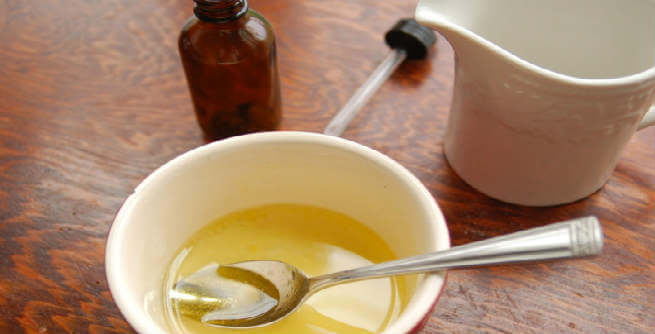The DIY beauty movement has empowered many enthusiasts to craft their own personal care products at home. From homemade lip balms to body lotions, crafting these concoctions can be rewarding. However, with this empowerment comes responsibility. One of the most overlooked areas in DIY beauty is the use of preservatives. It’s essential to ensure that homemade products are safe from microbial growth that can be harmful to the skin.

Why Are Preservatives Necessary?
When you craft a DIY beauty product, especially those that contain water, you’re creating an environment that’s potentially hospitable for bacteria, fungi, and mold. These microbes can proliferate rapidly in your products, leading to skin infections, spoilage, and a reduced shelf life.
Preservatives are substances that help inhibit the growth of these harmful microorganisms, ensuring that your DIY products remain safe for use.
Natural vs. Synthetic Preservatives
There’s a general misconception that natural preservatives are always better than synthetic ones. While it’s true that natural preservatives can be less irritating and more skin-friendly, not all natural options are effective against a broad spectrum of microbes. Some synthetic preservatives, on the other hand, have been rigorously tested for efficacy and safety.
Here are some popular natural and synthetic preservatives:
Natural Preservatives:
- Grapefruit Seed Extract (GSE): Though often touted as a natural preservative, its effectiveness is a subject of debate. Many believe that its preservative properties are due to the synthetic components added during extraction.
- Rosemary Oleoresin Extract (ROE): Extracted from the rosemary plant, ROE is an antioxidant, which means it prevents oils from going rancid but isn’t effective against microbes.
- Vitamin E: Like ROE, Vitamin E is an antioxidant rather than a true preservative. It’s great for extending the life of oils, but it won’t prevent bacterial or fungal growth.
Synthetic Preservatives:
- Parabens (e.g., methylparaben, propylparaben): Though effective against a broad spectrum of microbes, they’ve been controversial due to potential health concerns.
- Phenoxyethanol: A common alternative to parabens, it’s effective against bacteria but less so against fungi.
- Formaldehyde releasers (e.g., DMDM hydantoin, imidazolidinyl urea): These release small amounts of formaldehyde to preserve the product, but they’ve been subject to criticism due to potential skin irritation and health concerns.
Best Practices for DIY Beauty Preservatives
- Know Your Product: The type of preservative you choose should match the product you’re making. Oil-based products may not require preservatives but will benefit from antioxidants.
- Hygiene Matters: Always ensure your workspace, tools, and hands are clean. This can minimize the introduction of microbes.
- Do the Research: Understand the effective concentration levels for each preservative. Overusing can lead to skin irritation, while underusing may not adequately preserve the product.
- pH Level is Important: Some preservatives only work at certain pH levels. Always test and adjust the pH of your product accordingly.
- Patch Test: Before applying a new DIY beauty product to your face or body, conduct a patch test to check for adverse reactions.
The Science Behind Preservatives
Preservatives work by disrupting the life processes of microorganisms. Different preservatives achieve this through various mechanisms, such as breaking down microbial cell walls, denaturing proteins, or disrupting their metabolic pathways.
Water Activity in Products: Products that contain water (or products that may come into contact with water, like a body scrub) can be a breeding ground for microbes. It’s not just the presence of water but the water activity – the amount of free water available for microbial growth – that determines the likelihood of contamination. The higher the water activity, the more crucial the need for an effective preservative system.
Choosing the Right Preservative
Broad Spectrum vs. Targeted Preservatives: While some preservatives are effective against a wide range of microbes (broad-spectrum), others target specific organisms. When formulating a DIY product, it may sometimes be necessary to combine multiple preservatives to ensure complete protection.
Understanding Compatibilities: Not all preservatives play well with all ingredients. For instance, certain preservatives might be inactivated by specific emulsifying agents. It’s essential to understand these compatibilities before finalizing your product formulation.
Natural Preservatives – More Options
Beyond GSE, ROE, and Vitamin E, there are other natural substances sometimes used for preservation:
- Honey: Renowned for its natural antimicrobial properties, honey can act as a mild preservative. However, it’s not effective enough on its own for products with high water activity.
- Neem Oil: Often used in skincare for its therapeutic properties, neem oil has natural antimicrobial qualities.
- Fermented Radish Root: This acts as a natural preservative due to the peptides produced during fermentation.
Safety and Sensitivities
Preservatives, whether natural or synthetic, can be sensitizing to some individuals. It’s vital to:
- Understand Allergens: Some people might be allergic to natural ingredients like essential oils, which are sometimes used in natural preservation. Always be aware of potential allergens and list them on your product if sharing or gifting.
- Ensure Proper Storage: Light and heat can degrade preservatives. Store DIY beauty products in a cool, dark place, ideally in amber or blue containers that block out light.
The Role of Packaging
Even the best-preserved product can become contaminated if the packaging allows for it. Pumps and tubes, which minimize direct contact with the product, are preferable to wide-mouth jars.
Continued Learning and Updates
The beauty and skincare industry is continually evolving, with new research and findings emerging regularly. It’s beneficial to keep up with current research on preservatives, especially if you’re an avid DIY beauty enthusiast. Participate in forums, attend workshops, and never stop learning.
Final Thoughts
Embarking on the DIY beauty journey is exciting, but it’s essential to approach it with a balance of creativity and caution. By prioritizing safety through effective preservation, you ensure that your homemade concoctions nourish, rejuvenate, and protect without any unwelcome surprises. As with any craft, knowledge is power, and in the world of DIY beauty, it’s also the key to safety and efficacy.
